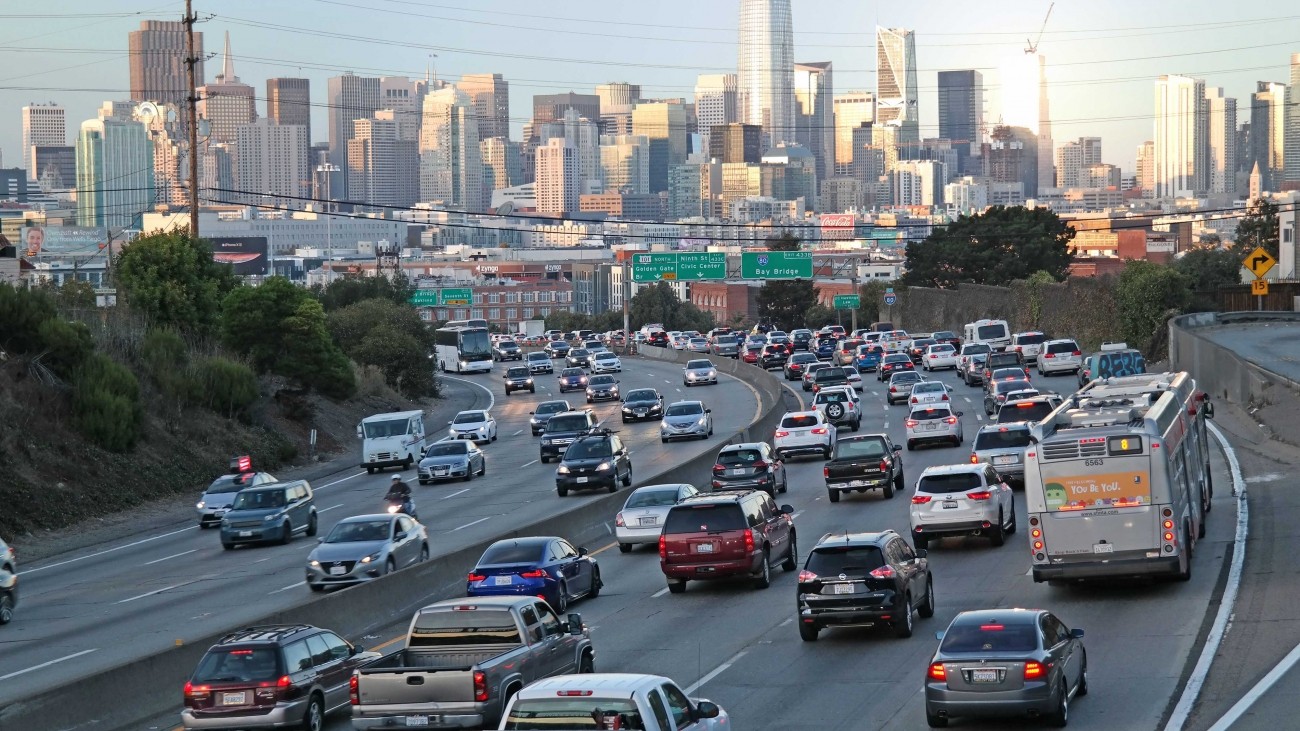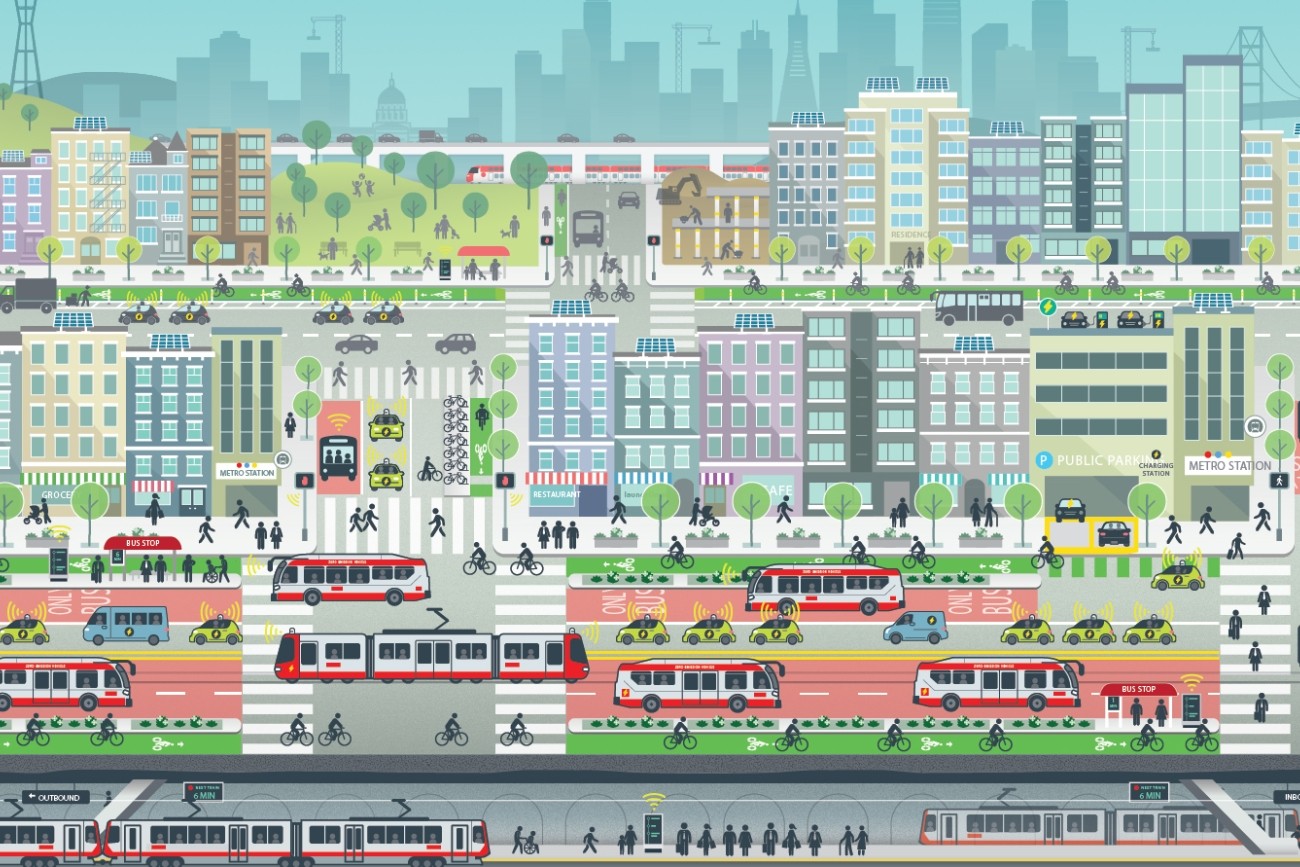
The Transportation Authority has recently begun conducting public outreach for our Northbound I-280 Transit and Carpool Lane, which seeks to provide priority for public transit and carpools at the I-280 northern terminus at King Street, as traffic congestion on the busy corridor exceeds pre-pandemic levels.
The project’s goals are to promote carpooling and transit use, enhancing reliability and efficiency for these efficient and sustainable modes. This would help keep us aligned with regional goals and the Transportation Authority’s freeway management strategies, while maintaining safety and access for all travelers.
The project is at the early stages of conceptual development and environmental review, with two main transit/carpool lane design options under consideration for the relatively short segment (<1 mile) at the northern terminus of I-280N from the 18th Street overcrossing to King/5th Streets:
- Option 1: I-280N Left-side Traffic Lane Conversion – Changing the existing (left side) #1 general purpose lane to transit/carpool use only, with #2 (right side) lane remaining a general purpose lane
- Option 2: I-280N Shoulder Conversion – Changing the existing left side freeway shoulder to transit/carpool lane use via striping (not physical widening of the roadway), leaving the #1 and #2 freeway traffic lanes for general purpose traffic use.
Given the short length of these segments, the project can be considered “operational” in nature to give buses and carpools access to signalized intersections “at the front of the line” as is provided for bicycles or other road users on some surface streets and arterial state routes.
The project also considers the possibility of extending either of the above configurations onto King Street to further prioritize public transit and carpools as they continue on local streets. This could be done by converting the #1 general purpose lane on northbound King Street from 5th Street to 3rd Street. One key aim is to enable Muni and SamTrans buses and eligible shuttles to access the existing red transit lanes on 3rd Street and on Mission Street as buses head to connecting services at the Salesforce Transit Center.
Community Outreach, Round 1 – November 2023 to January 2024
The study team held a public Town Hall and other community meetings in November and is available to meet with other interested groups through January 2024.
Some issues that the study team is analyzing and that community members raised during initial outreach meetings include:
- The potential to increase delay to general (non HOV) traffic on the freeway (with long queues resulting from Option 1: Left Side Traffic Lane Conversion
- The potential to generate more traffic (increased vehicle trips and vehicle miles of travel) in the area or cause traffic to divert to other exits (e.g. 6th Street) or surface street routes
- The potential impacts of the project (negative and positive) on pedestrian safety and neighborhood livability
- The challenge of enforcing transit/carpool lane violations
- The benefits to transit riders and carpools and potential to attract new riders/carpoolers resulting in moving people more efficiently through the corridor.
The study is in the early stages and no preferred alternative has been selected. We welcome public input and engagement through early 2024. The team will incorporate all public feedback and input into the evaluation of alternatives.
Our next steps include transportation analysis and signal and roadway design tasks to evaluate and optimize project concepts. We expect to report our assessment results back to the community in a second round of public outreach by summer 2024.
For more information, visit the project webpage to view the presentation and sign up for study email updates. To contact the study team with questions or to request a presentation for your organization, please email 101280@sfcta.org.
